Understanding energy management is key.

Anyone who has flown model airplanes for any length of time has had an engine failure, with the resulting distinct “pleasure” of performing a dead-stick landing. It doesn’t matter if the engine is nitro, gas, electric, or a ducted fan—all engines are mechanical and are, therefore, subject to some kind of failure over time. When you are put into this situation, however, the outcome of the approach and landing will greatly depend on your understanding of energy management.
ENERGY MANAGEMENT
When an airplane loses its engine, it has two basic forms of energy. The first form of energy is determined by the speed of the airplane, which is its kinetic energy. The faster the speed, the greater the kinetic energy. The second form of energy is potential energy, which is determined by the height, or altitude, of the airplane. The higher the airplane, the greater its potential energy.
It’s also important to know that these two forms of energy are interchangeable and that they depend on each other. As an example, if you are in a glide with excess airspeed, you can pull back on the elevator and climb. As the plane climbs it will lose airspeed, which means the kinetic energy of the plane is being transferred into an increase in potential energy. In a similar manner, when in a descent, the potential energy of the plane is being decreased to increase, or maintain, its kinetic energy. This is, unfortunately, not a one-forone trade because of the drag of the plane. This is the exact theory in flying a glider: trading altitude to maintain airspeed.
PUTTING THEORY TO USE
This story is from the {{IssueName}} edition of {{MagazineName}}.
Start your 7-day Magzter GOLD free trial to access thousands of curated premium stories, and 9,000+ magazines and newspapers.
Already a subscriber ? Sign In
This story is from the {{IssueName}} edition of {{MagazineName}}.
Start your 7-day Magzter GOLD free trial to access thousands of curated premium stories, and 9,000+ magazines and newspapers.
Already a subscriber? Sign In
Legend Hobby / Seagull Models - Cessna Grand Caravan 208
The Cessna Grand Caravan 208 is a legend in aviation circles. A single engine utility aircraft that punches up with capabilities that rival many twin engine aircraft in its class. Its seemingly simple configuration belies its near extreme utility.
PROPER CG LOCATION FOR AEROBATICS
If you are getting into aerobatics and are starting to perform more advanced maneuvers, it is time to discuss ways you can not only become a better pilot, but how you can also improve the flight characteristics of your airplanes.
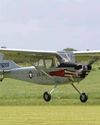
Legend Hobby 13-Foot L-19 Bird Dog/ Cessna O-1
This famous multi-mission single engine observation aircraft served from 1950-1974. From calling out target locations to providing intel/recon information, the Bird Dog was a valued asset in both the Korean War and Vietnam.
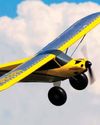
EARN YOUR WINGS
10 Tips for First-Flight Success
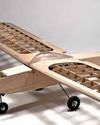
Old School Model Works Fifty Six
The Fifty Six takes its design cues from the original .09- to .15-size Carl Goldberg Falcon 56 of the 1960s. Reworked to incorporate modern, lasercut techniques to make kit building better than ever.
FLYING TWINS Multi-engine warbirds made easy
Let’s face it, there’s just something extra special about twin-engine RC aircraft. Most modelers stop what they’re doing when a twin fires up on the flightline.
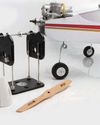
HOW TO BALANCE PROPELLERS
Four easy steps to increase performance and reduce vibration
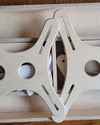
PRODUCT REVIEW: RC PLANE STANDS BENCHTOP MODEL
I’m a sucker for shop stuff. I buy tools I will probably never use just because they are cool, or I might need to use them someday. When Glen from RC Plane Stands reached out about a review, however, I knew as soon as I browsed their website that I would be receiving something I would use a lot, maybe even daily.
SPIRIT OF RHINEBECK AWARD WINNER
A close up of Norman Malinowski’s 1/3-scale Albatros
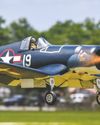
CENTER OF GRAVITY BASICS
The secret to a plane that flies well